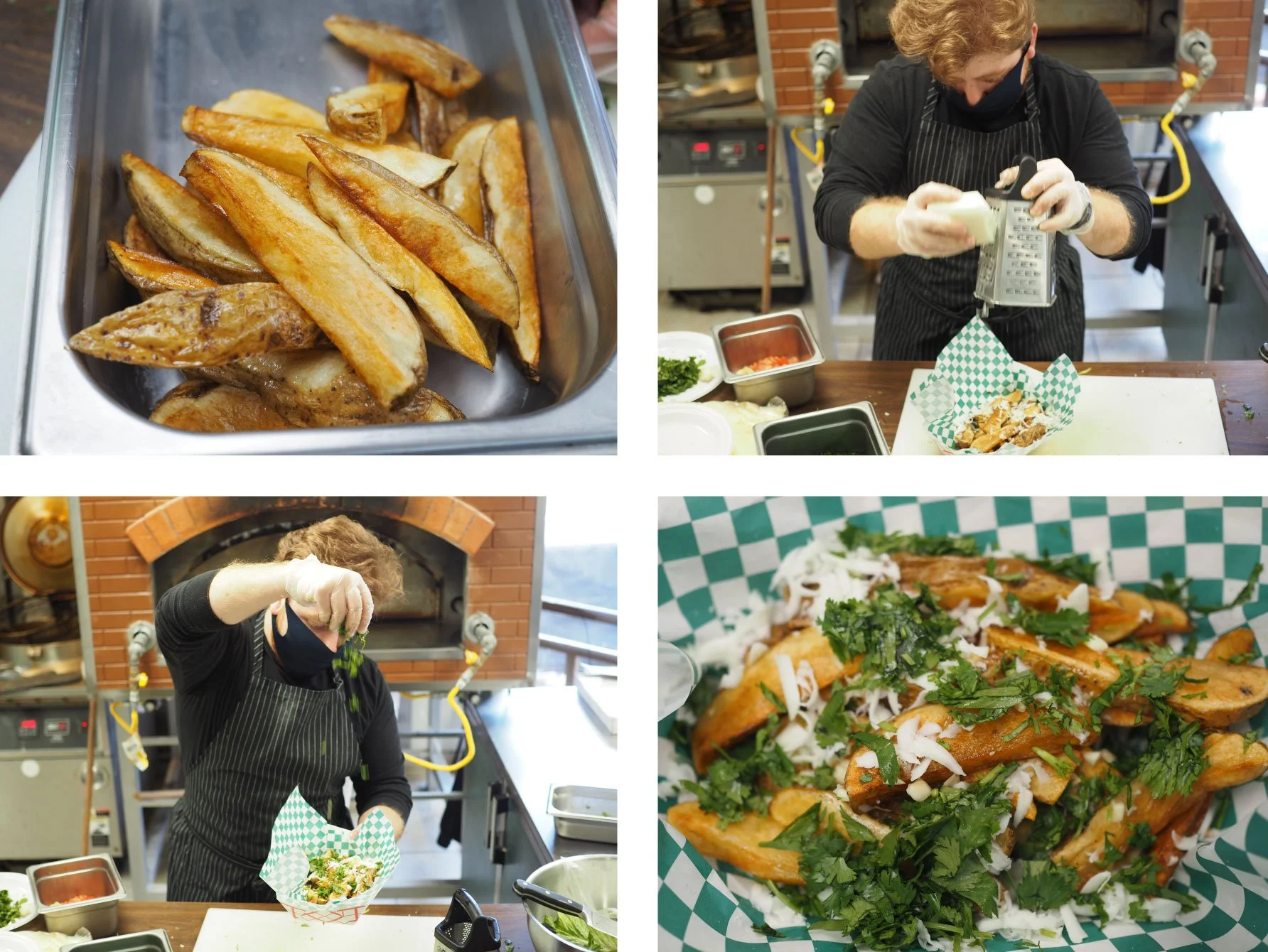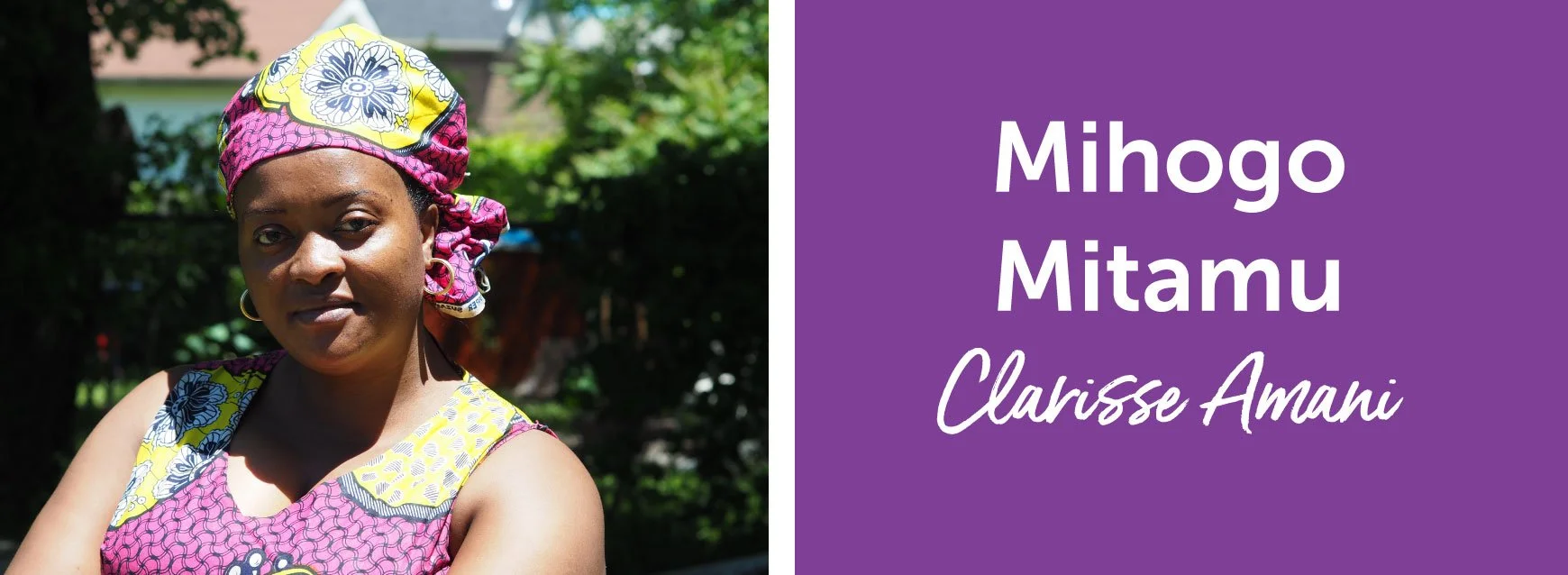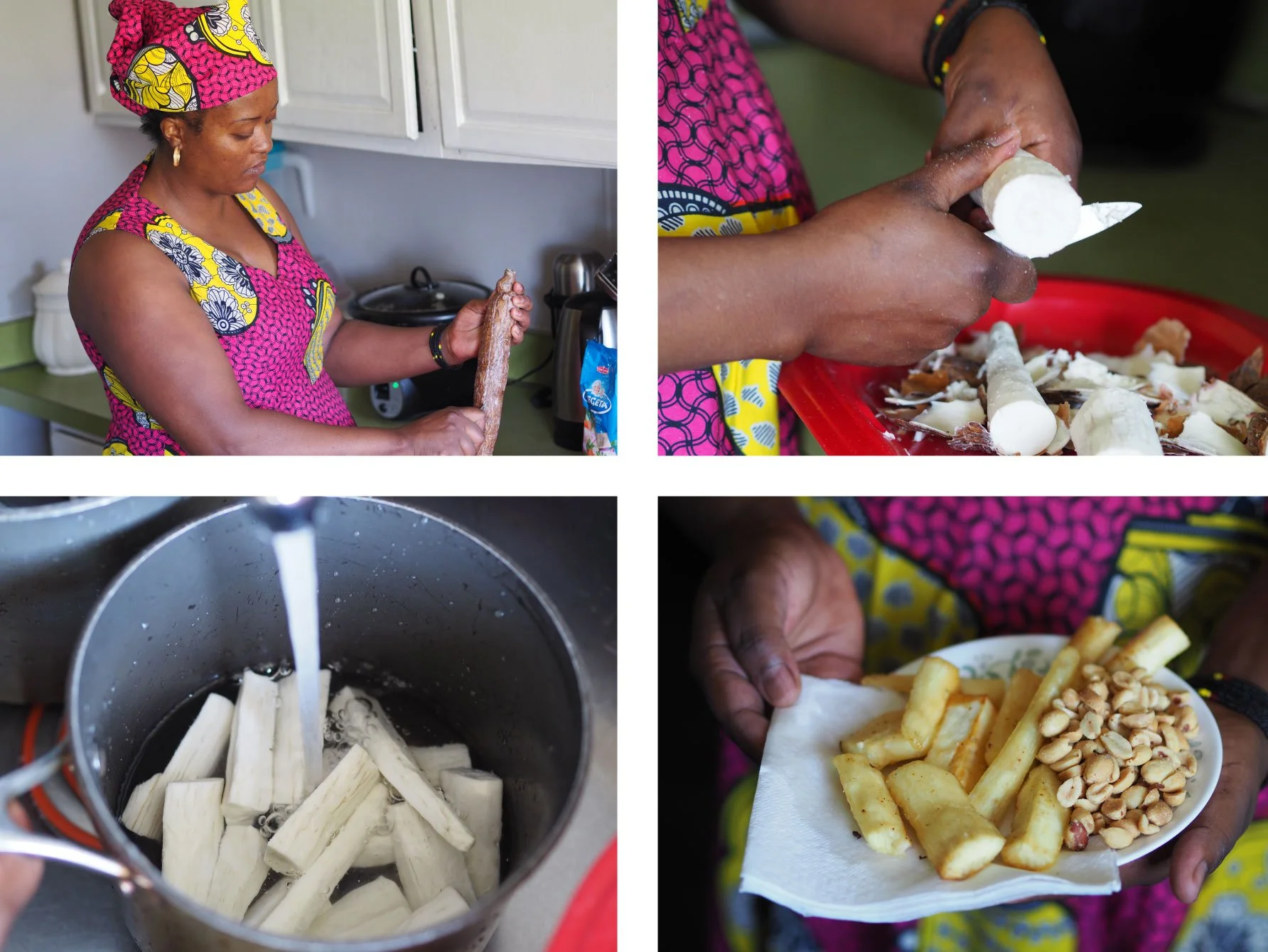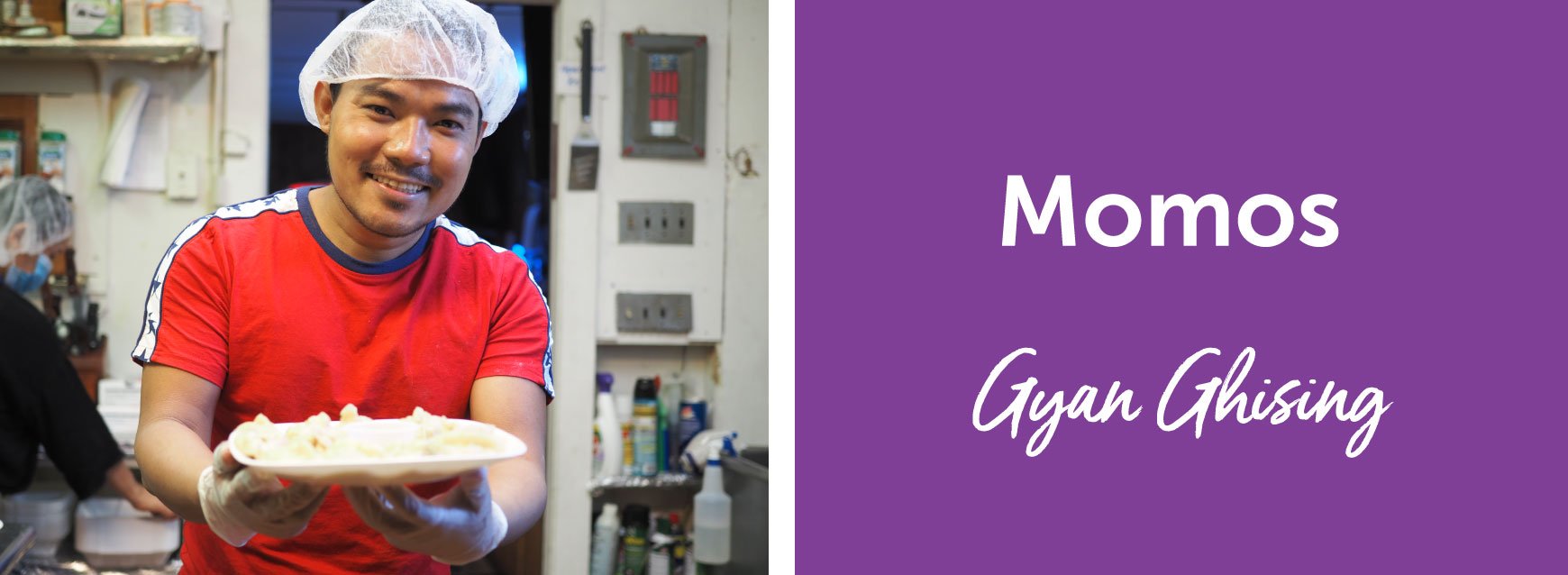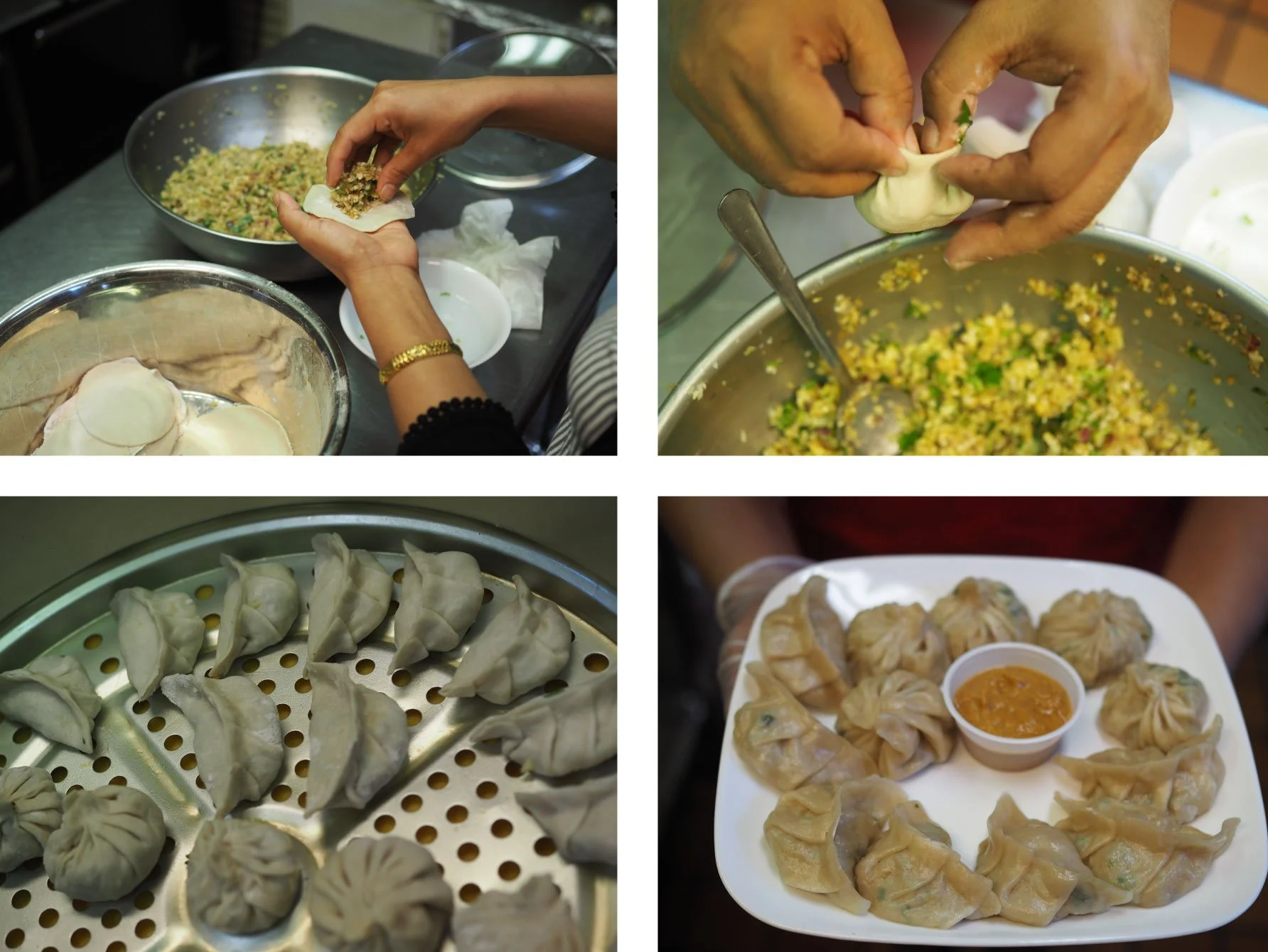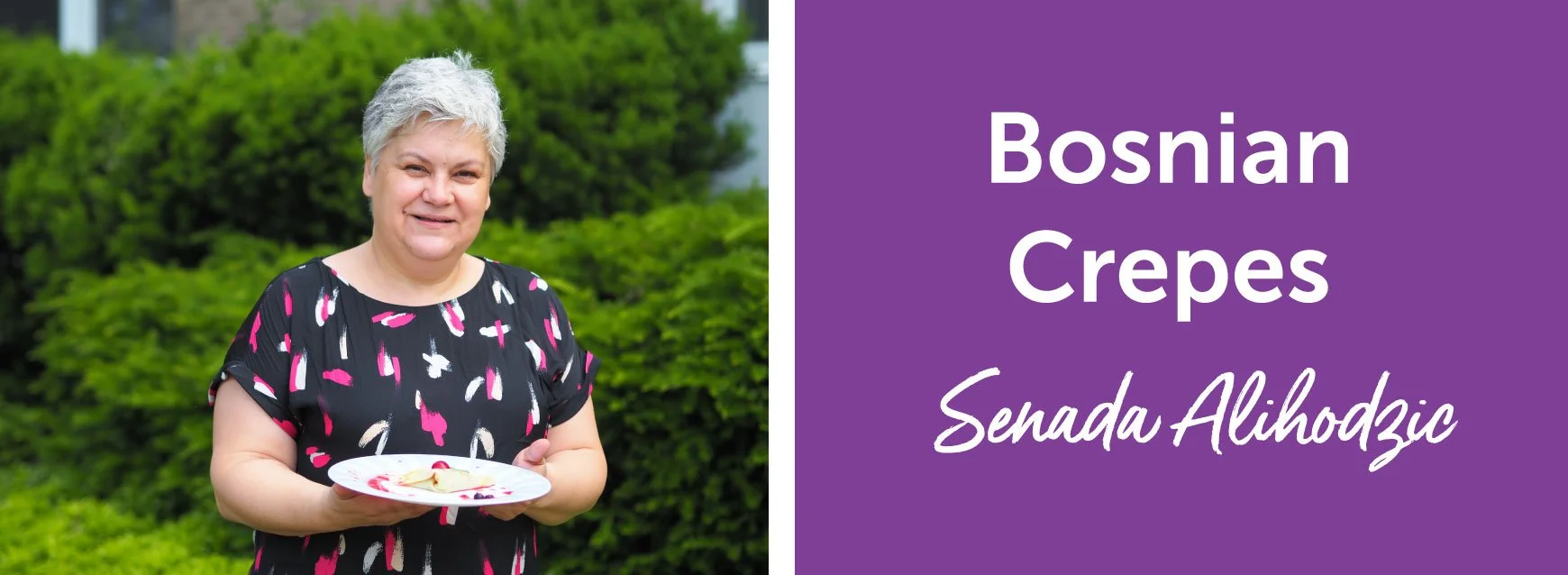World Refugee Day | Recipes
Food connects us to our ancestors, our family, and our culture. Most New Americans are intensely conscious of this. Those who came as refugees were forced to flee persecution or war. Keeping culinary traditions alive is a way for them to remember the good memories of their homeland. Many also recognize that their mother’s or grandmother's recipes are often a healthier alternative to the fast and processed food that now surrounds them.
To celebrate World Refugee Day 2020, Erie Arts & Culture asked members of our community who came to Erie as refugees to share a simple recipe from their culture that is personal to them. We are excited to share these recipes with our readers. We focused on recipes that are simple enough for anyone to try. Recipes were contributed by former refugees from the Democratic Republic of Congo, Bhutan, Eritrea, Syria, and Bosnia.
With the exception of Senada, none of the refugees who contributed to this project used formal measurements. Instead, they gauge amounts through their senses. In other cultures, cooking is preparing food is a process of observing the colors, smells, feel, and even the sounds of ingredients as dishes are prepared. Each contributor stressed that their recipes are extremely flexible; proportions can be altered to what is available and to the cook’s personal taste. The formal quantities we provide came from an amalgam of online recipes, which were included to serve as a starting point for the beginner chef.
We encourage you to step out of your comfort zone, patronize one of Erie’s many refugee-owned markets to purchase ingredients, and try one of the dishes below.
Kelly Armor assisted with compiling these recipes. In her role with Erie Arts and Culture, Kelly assists artists in our region in sustaining their cultural traditions. She interviewed each participant, transcribed their recipes, and quantified some of their ingredients. Additional assistance was provided by the staff at the United States Committee for Refugees and the International Institute (USCRI) of Erie.
Frittata (Eritrean/Italian Scrambled Eggs)
Ingredients
6 large eggs
1 red or white onion (diced)
1 to 2 jalapeno peppers (chopped jalapeno peppers,1 or 2 depending on if you can take the heat!)
1 whole tomato (diced)
½ tsp. (or to taste) dried ground cumin, ground coriander, and garlic powder
Salt and pepper to taste
Instructions:
1. Heat oil in a large pan, add diced onion, jalapeno and tomatoes, cook until semi soft. Beat the eggs in a bowl, then add them to the vegetables and scramble. Before the eggs are completely cooked add the cumin, coriander, and garlic. Add salt and pepper to taste and serve hot alongside bread, pita, or Injera (Eritrean flatbread).
2. Walaa says that this dish comes from the Italian colonization in Eritrea, 1882-1941. Her great-grandparents prepared frittata along with other Eritrean and Italian-influenced dishes. Her mother learned it, and many other dishes, from her parents and have passed them down to her children. Walaa says this food is important to share with her large family and friends because it connects them to their history and memories.
About Walaa:
Walaa Ahmad resettled in Erie with her parents 19 years ago. She is a graduate of East High School and Penn State Behrend. She is the Assistant Director for the Office of Educational Equity & Diversity Programs at Penn State Behrend. She says, “ I really enjoy living in Erie with my husband, family and friends. Erie is very diverse, with so many cultures, traditions, and people from all over the world.”
Syrian Fries
Ingredients
Potatoes
Frying Oil
Cilantro
Garlic
Halloumi Cheese
Salt to taste
All the ingredients can be purchased at Sham Market, 760 E 12th St, Erie, PA 16503
Instructions:
1. Prepare french fries as you normally would.
2. While still extremely hot, top them with grated halloumi (it will melt a bit), and sprinkle with chopped cilantro, minced fresh garlic, and salt to taste.
Tabouli - Bulgur Wheat Salad
Ingredients
¼ cup bulgur wheat
¼ cup hot water
1 cup finely chopped fresh parsley
1 cup chopped tomato
¼ cup chopped onion or scallions
⅓ cup olive oil
⅓ cup lemon juice
Salt and black pepper to taste
Lettuce
Instructions:
1. Cover the bulgur wheat with hot water and let stand for about 10 minutes (or follow directions on the package).
2. When it has absorbed all the water, fluff it with a fork and mix everything (except lettuce) together in a big bowl.
3. Eat immediately or refrigerate it for several hours to allow the bulgur to absorb all the dressing. You can chop the lettuce and add to the mix or serve on a bed of lettuce leaves or wrap a dollop of tabouli in a lettuce leaf.
About Bassam Zahara, Bassam Dabbah, Omar Eed:
Both the fries and tabouli are signature dishes for their food truck, Shawarma Station. Bassam Dabbah says, “They are our main advertisers! People in Syria use this food at every celebration and now people in Erie expect it from us.” They all insist that fresh ingredients are what makes their food so tasty.
Bassam Dabbah, Program Coordinator at the International Institute, came to Erie with his wife and children in 2009. He owns Sham Market and runs the Shawarma Station with
Bassam Zahara and Omar Eed (black shirt). Bassam Zahara and Omar came to Erie in 2016.
Boiled and Fried Cassava - Mihogo Mitamu
Ingredients
One cassava root
Water
Cooking oil
Vegeta all purpose seasoning
Salt
Peanuts (optional)
Where to purchase ingredients: Cassavas, or yuca, are available for purchase at most any supermarket. You don’t have to worry about choosing a good one. It is like buying potatoes.
Instructions:
1. Using a paring knife, peel the cassava and then cut it into pisces about 3” long and 1-2” wide.
2. Using your paring knife, remove the inner fiber found in the core of the cassava. Wash the cut pieces with water.
3. Place a pot of water on the stove and mix in a serving of Vegeta. Allow the water to come to a boil.
4. Place your cassava pieces into the pot, making sure all the pieces are submerged. Boil the cassava pieces for about 10 minutes, or until tender.
5. Test by pressing a fork into a piece of cassava. If the fork penetrates the cassava easily then it is done boiling.
6. Drain the water. If you desire, you can lightly salt the boiled cassava and eat it. Or, if you want, you can fry the boiled pieces to create cassava fries. You can fry them with a deep fryer or a pan with oil. Allow the cassava pieces to fry for 1-2 minutes, flip, and let sit for an additional 1-2 minutes.
7. Salt the cassava fries and serve with an optional side of peanuts.
Clarisse's Thoughts:
The cassava root is easy to find at most grocery stores like SaveALot, Giant Eagle, or Walmart. She says, “The cassava plant is very important in Africa. It is the largest African vegetable. We eat the root and we also make fufu from cassava root flour. You can eat the leaves. You can even eat it raw. The sticks we burn for fuel. The skin can be fed to the chickens or goat or to make fertilizer for the crops. Nothing is wasted!”
Clarisse says that in Congo it is mostly thought of as a breakfast food, but here it can be served as a snack. “We think of cassava as a man’s food. They feel it gives them strength. It fills you up! If you have it for breakfast you are strong the whole day.”
About Clarisse:
Clarisse Amani came to Erie in 2010 with her husband, Alex, and their two daughters. She loves sharing her Congolese culture with Americans. She has trained local teachers about using traditional African song, cooking, and fashion in the classroom. Clarisse is a skilled seamstress and dancer with an entrepreneur mindset. She has lived in Fort Worth, Texas, and Montreal, Quebec, but recently moved back to Erie. Clarisse now has eight children, aged 1 month through 17 years.
Momos - Vegetarian Dumplings
Ingredients
Filling:
3 cups of finely shredded cabbage
½ cup finely chopped onion, carrots, and/or spinach (if desired)
1 tbsp. minced fresh ginger
1 tbsp. minced garlic
1 green thai chili, minced (optional)
2 tsps. salt
1 tsp. soy sauce
Juice of 1 lime
Dough:
1 package momo wrappers (makes 50 dumplings)
Gyan makes his own dough with all purpose flour, ghee, and water but recommends beginners purchase ready-made wrappers
Dipping Sauce:
3 fresh tomatoes
3 tbsp. sesame seeds, Fresh Thai chili or cayenne powder to taste (if desired)
Salt to taste
Where to purchase ingredients: One of Erie’s Bhutanese-owned markets, such as UK Supermarket located at 1105 Parade Street.
Instructions:
1. Use a food processor to chop the cabbage and other vegetables. Add two teaspoons of salt and let sit for 20-30 minutes before using a strainer or towel to squeeze out the excess water.
2. Mix vegetables with ginger, garlic, soy sauce, and lime juice.
3. Fold a spoonful of filling into homemade dough or a store bought wrapper. Wet your finger tips with water and fold the edges of the dough or wrapper over itself to seal the momo shut. There are different ways to fold a momo and the process can be tricky at first. To assist with this process, watch online videos for directions.
4. To make the sauce, add your ingredients into a blender and puree. Put the dumplings in a steamer basket and steam for 20 minutes. Serve hot with dipping sauce. Garnish with cilantro and half of a lime.
Gyan's Thoughts:
“Momos are party food, family together food for special days like weddings or holidays,” says Gyan, “They are a lot of work, but everybody’s favorite.” There is no one recipe for momo. Aside from a base of cabbage, everyone makes the filling according to their personal taste. Sometimes momos are filled with ground chicken or pork.
About Gyan Ghising:
Gyan Ghising was born and raised in Bhutan. He learned how to make momos from his grandmother when he was nine years old. He says, “Due to the unfortunate happenings in 1988 between the dirty leaders and tyrannical monarchy in Bhutan, I spent 21 years in Nepal as a refugee in a camp with my parents and two siblings.” He came to Erie in 2011. He is a musician, actor, director, songwriter, and a Teaching Artist with Erie Arts & Culture. He is on the board of directors of the Erie Metropolitan Transit Agency and is the owner of My Way Bar and Grill.
Bosnian Crepes
Ingredients
1 egg
⅔ cup milk
½ cup flour
4 tbsp melted but
es
3 tbsp. sesame seeds, Fresh Thai chili or cayenne powder to taste (if desired)
Salt to taste
Instructions:
1. Start by mixing your wet ingredients in a bowl, including your milk, melted butter, and egg.
2. Once whisked together completely, add your sugar, salt, and flour. Mix together the wet and dry ingredients and then strain the batter to remove any lumps. Let the batter rest for 5-10 minutes.
3. Heat a 8”-10” non-stick pan over medium or medium-high heat. Add a little butter to the pan to prevent the crepe from sticking.
4. Ladle just enough batter into the pan to coat the bottom in a thin layer. Remember, you’re making crepes not pancakes.
5. After about 7-10 seconds, flip the crepe. Cook it on the other side for another 10 seconds and then slide the finished crepe onto a plate.
6. Repeat until all the batter is used.
Senada's Thoughts:
Crepes can be either savory or sweet. Senada prefers her crepes as dessert. She recommends spreading Nutella, fruit compote, chopped nuts, or cheese on the top of each crepe. Crepes can then be rolled up or folded into quarters. Crepes can be finished with a dusting of powdered sugar or drizzling extra compote over them. Garnish with fresh fruit and sprigs of mint.
You can also make a quick layer cake of crepes with toppings in between each layer.
Senada says she has always loved to cook and crepes are one of her favorites. They are popular throughout Europe. She makes them for dessert or whenever she craves something sweet. She said, “They bring back good memories. When my grandma or mom was making a big stack for our family she would pretend not to notice when I stole one. Now I let my kids do the same when I make them!”
About Senada Alihodzic:
Senada Alihodzic fled Bosnia in 1993. She is the Coordinator Resources Coordinator at USCRI - International Institute of Erie where she has helped resettle hundreds of other refugees. She raised her three children here in Erie and serves as the Board Secretary for the Islamic Bosnian Community Center of Erie.




